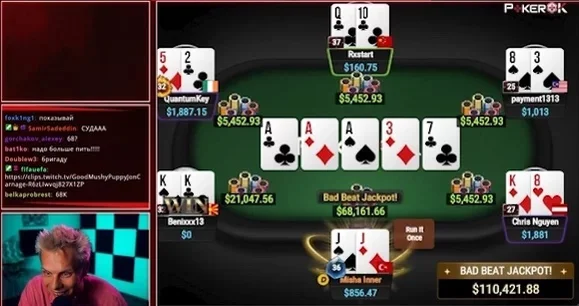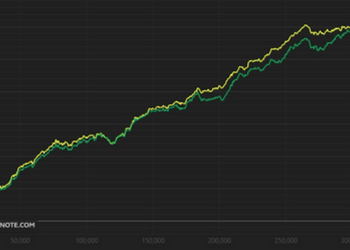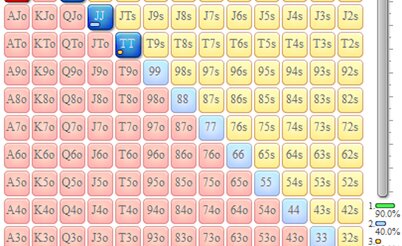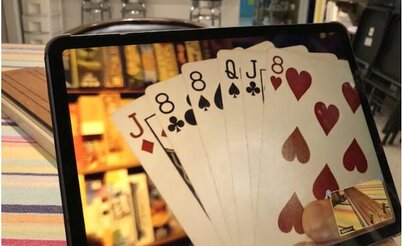We recently talked about which rooms and apps are available and how to choose tables effectively.
But you can select even more widely – if only you have the desire! Rooms and apps offer many options and disciplines, attracting amateurs. Fish willingly sit down at tables with bomb pots, jackpots, and other add-ons. Let's figure out where exactly to look for creative recreational players – and whether the disciplines that they like so much are fighting lately.
PokerBros – Pineapple and Crazy Pineapple
The PokerBros creative department clearly works seven days a week: it was there that two-board games and three-card Hold'em – Pineapple and Crazy Pineapple – became popular a couple of years ago. In both cases, players receive three cards preflop: the only difference is when the extra card is asked to be thrown away.
- Pineapple – before the start of preflop betting
- Crazy Pineapple – before betting on the flop
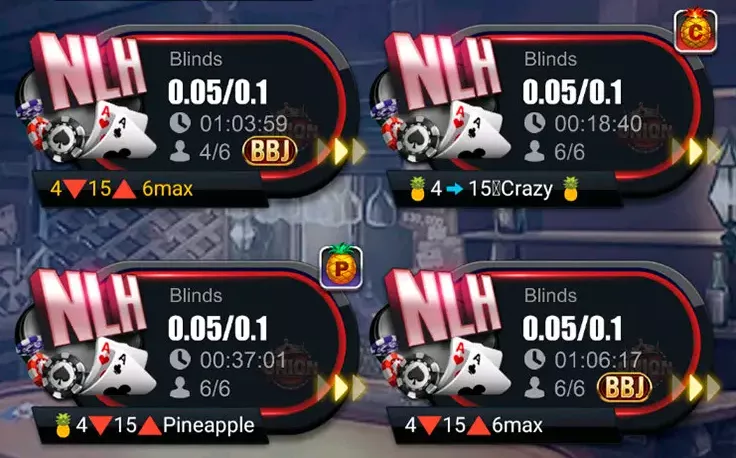
We asked GreenLine coach Niyaz "Hotshot" about who needs all this and why.
I like the pineapple setup: you sit neatly without unnecessary moves, the regs and fish give themselves away with top pairs. But Crazy is too risky: something between Hold’em and Omaha. In a regular pineapple game, if you are dealt AK2 preflop, then you don’t need much intelligence to throw away a deuce. But in a crazy situation you throw away a card on the flop, and many factors will be taken into account. Should I leave, for example, a pair in my hand or break it and leave some backdoor flush draw and an overcard?
There are not that many more fish than at regular tables. But if he gets knocked up, it’s almost always a good VIP; I’ve never seen shit like 50\7 in the pineapple games. If a fish has already arrived there, he grinds with all his heart. Regs in general don’t go crazy at such tables, but they play pineapple like regular hold’em, which doesn’t work at all. For example, QQ in the big blind against EP is a default 3-bet for many in NLH – accordingly, you would think they do the same in these games. But there this hand does not 3-bet at all, it always calls. Or, for example, they happily go for the stack with JJ in late positions.
In short, the ranges should be three times narrower than in regular hold'em. Mathematically, any starting hand comes in three times more often here. Accordingly, if you play with a VPIP of 20%, it’s the same as playing NLH with a VPIP of 60%.
Double Board
PokerBros also has tables with two boards: the hands of the players involved are played on two boards at the same time, and the pot at showdown is divided proportionally. For example, if two players reach showdown, and each wins one of two boards, both will receive half the pot.
The discipline is not very popular; they mostly play Omaha.
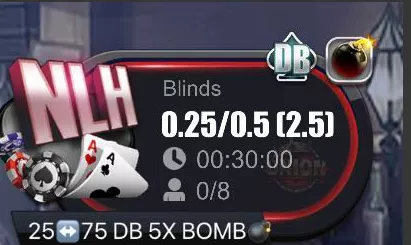
As you can see in the screenshot, this table not only has two boards, but also bomb pots! We'll get to them later.
PPPoker — 3-1 NLH Seven-Deuce
3-1 is the same Pineapple that we described above. There is no “crazy” option (where the third card is thrown on the flop) at PPPoker; the extra card must be parted with before the start of preflop betting. If you don’t have time to choose what to fold before the end of the time bank, the card of the lowest value is automatically folded.
A unique format that does not exist anywhere else yet – Seven Deuce. This is a popular live add-on, where the winner of a hand with 72o gets paid extra by the entire table. Last summer, at a table with this rule, Tom Dwan played a sensational hand against Rui Kao: Tom bluffed more than €300,000 on the A5QAK board, but could not knock out 8-high.
When a player wins with 72o at PPPoker, the others pay him a predetermined amount from his stack. To win, be sure to use at least one pocket card in the best combination: a pot divided at showdown without cards older than the board will not bring a bonus.
Winamax – FLOOOP and Short Track
In the popular European room, there are also two unusual hold’em variations.
FLOOOP is a game for those who like to watch the board: Hold'em without preflop action at all. Everyone pays the ante and goes straight to the flop, there are no blinds. You can sit at the tables with a stack of 25 to 50 ante. It is forbidden to leave the table without playing at least 10 hands.
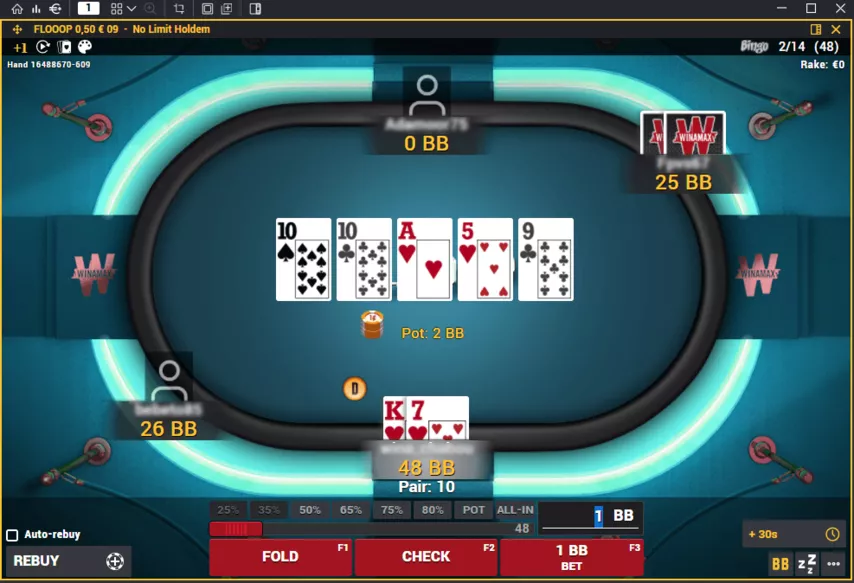
Short Track – tables with super-short stacks. Maximum buy-in – 5 BBs. If you win some hands, you can sit further with a larger stack or re-enter again with 5 BB.
Winning Poker Network – 7 Day No Rathole
A unique game format where you won’t be able to quickly roll back to the starting stack. Buy-in – 10 BB or 40 BB. You can return to the table within a week only with the same stack with which you left it. Because of this, the stacks can be colossal. In the spring of 2021, the PLO stack of Gražvydas Kontautas increased from $4,000 to $1 million.
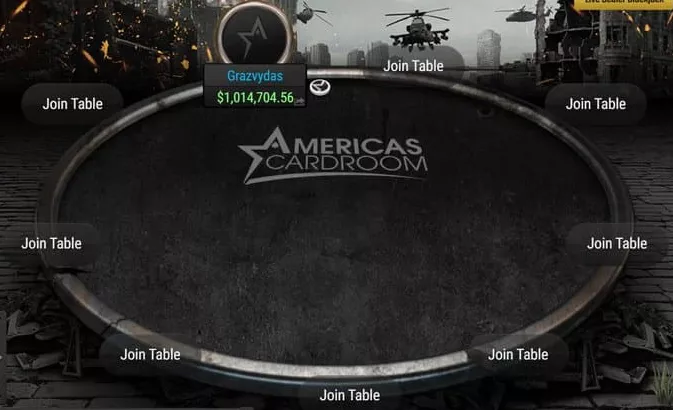
Most tables in this format are available on Americas Cardroom. There are fewer tables in PokerKing, and for some reason, there are no tables at all in Black Chip Poker. If you do not have an ACR account, write to our support – we will help you get the best conditions for registration. It is not prohibited to have different accounts in each storefront.
- Increased rakeback and personal bonuses
- Help with deposits and cashouts
- Access to mobile applications
- Solving problems with accounts
- Technical support
- Questions about the site and forum
Common Variations
Bomb pots
What is this? Special tables where every few hands all players pay a certain number of BBs preflop and immediately go to fight on the flop. The size of the contribution and the frequency of such pots depends on the specific table. PokerBros and PPPoker also have tables with bomb pots in every hand!
They usually collect five BBs, but there are also bomb pots with contributions of up to 10 BBs. A range can also be specified (for example, from 5 BB to 10 BB) – and each time the amount will be random. There are no blinds in such hands. Action on the flop opens SB.
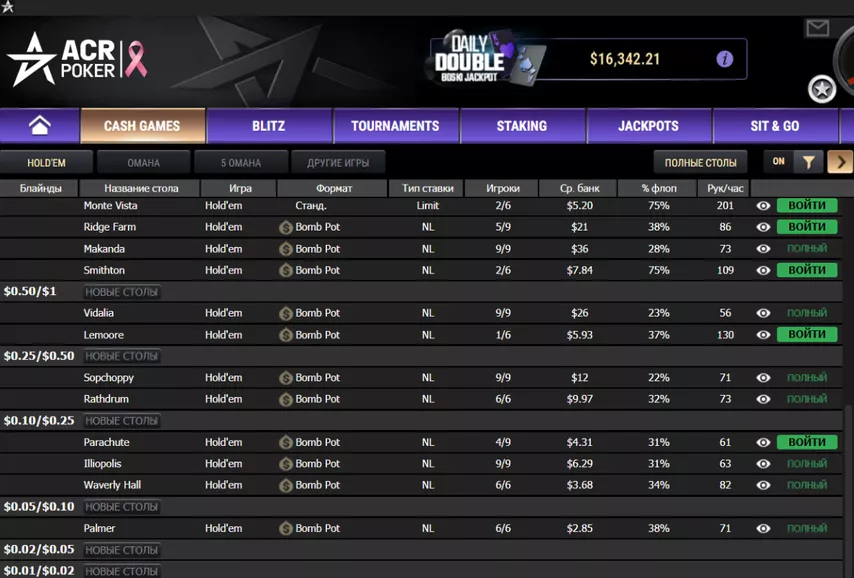
Where to play? PokerBros, PPPoker, WPT Global, and WPN network rooms.
We asked GreenLine coach and streamer ZloyJoker to tell us about their impressions of playing with bomb pots.
Playing on tables with bomb pots is, I would say, not for everyone! Everyone has 100% ranges, there are 30 or 45 BB in the pot, and you have to somehow fight for this pot. Everything that happens there looks like a fight between drunks at a rural disco. Everyone does what they can. It can be a lot of fun, and I think in these hands the advantage comes from players who have a lot of experience behind them in the live world, where multi-way games are played a lot.
There are a lot of fans at these tables because there is action. It is not uncommon to see three or more people fielding on the flop. You don't see this very often at the reg table. These spots play differently: someone can go all-in with any top pair, while another can only go all-in with a set. Because of this, it is very difficult to build some kind of utilitarian strategy that would work against everyone. There are many factors to consider to make a decision.
I think these tables are profitable, but only due to the fact that there are always enough amateurs there. But bomb pots don’t really affect the action in “regular” hands. Until a bomb is dropped on the table, everyone behaves well and plays their game. As soon as the bomb falls, the madness begin. After this hand, everything returns to its place again. That's how they play.
Tables with straddles
What is this? The third blind is twice the size of the big blind and has the last action preflop. Live it is common for UTG positions; online it varies.
Where to play?
PokerBros – a straddle can be either voluntary or mandatory.
WPT Global – the game is played with straddles on almost all tables. If you see a table with straddles disabled, it is most likely empty. There are also tables that are as gambler as possible: with straddles, antes, and bomb pots at the same time.
Rooms of the Chico network – straddles are available on all tables from NL10 to NL500, and in PLO too.
GGPoker straddle can be played at any Hold'em and Omaha table. Available both at UTG and at all other positions. In the same menu, you can place a blind all-in.
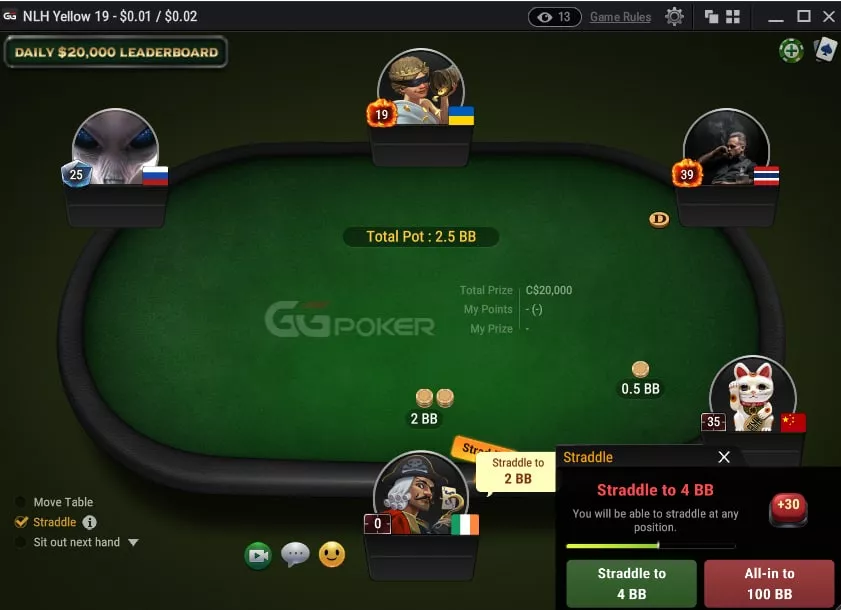
Tables with minimum VPIP requirements
What is this? At such tables, it is imperative to maintain the average VPIP no less than a given value – from 25% to an indecent 50%. If you play lower, a notification will appear that you need to urgently correct yourself – as a rule, you are allowed to catch up with the required percentage in the next 10 hands. If it doesn’t work out, they will force you to leave the table. It happens that they won’t even let you sit at the table if your average VPIP in the room is less than the specified one. There is usually an ante at the same time.

Where to play? PPPoker, PokerBros
Well-known high-limit regular Alexander "shpr0ta" told us what techniques will help maintain the desired VPIP and how antes affect ranges:
In general, the presence of ante in a hand encourages people to enter pots more. We expand our raising ranges, protect the blinds more widely, and cold call more often in late positions. We are trying to steal pots with 3-bets and squeezes. That is, on ante tables the preflop always expands – but sometimes this is not enough. For 9-max, the overall VPIP of 25% is clearly too high – but at such a long table there can be several amateurs at once! But such tables are only available in Diamond – the largest PokerBros alliance – at limits starting from NL2K. At the limits of NL600 and below there are few such exotic formats: there everything is usually limited to 6-max tables with a mandatory VPIP of 25%. It's not that hard to ride.
The selection in this case always depends on the amateur. If a very good fish is sitting at the table and you are ready to play wider ranges, you need to evaluate your expectations and sit down. They definitely like these tables, they get more action there. But whether you personally can handle this VPIP for this amateur is an important question. Standard charts won’t help here, but you don’t have to go beyond the ranges too often: only when that very button lights up, saying your VPIP is lower than necessary. In this case, yes, sometimes you have to start completely garbage, even add limps (to get this garbage cheaper). But in fact, if you adhere to the rule of opening a little wider and protecting the BB, somewhere for an amateur to add cold calls in late positions (with high suit hands) – then in general 25% of VPIP can be kept normally, without outright garbage hands.
Jackpots
What is this? The most popular variation today is Bad Beat Jackpot. To get it, you need to lose with a very strong combination to an even stronger one. The loser gets most of it, the winner gets a big chunk, and the rest of the players at the table also share small rewards among themselves.
A couple of years ago the requirements were strict; you usually had to lose at showdown with at least four of a kind. Today, in almost all rooms and apps, catching a jackpot is much easier: payouts have become smaller, but the likelihood of catching luck by the tail has increased significantly. Now many regulars (quite rightly) perceive BBJ at the table as part of rakeback.
In 2023, GT+ players received nearly $300,000 in bad beat jackpots on the PokerBros app alone. Most often the winnings range from $2,000 to $3,000, with the largest jackpot this year so far being around $30,000. Over the course of 10 months, more than 40 of our players successfully “bad beat”, some more than once.
How do jackpots differ in different rooms and applications?
PokerBros. Most tables with BBJ. You need to lose in Hold'em with at least a full house AAAJJ, in Omaha – with four of a kind kings, in PLO5 – with a straight flush from four to eight. The minimum pot size for activation is 10 BB. The rake from each bank goes into the jackpot fund, the size depends on the limits: from 0.6 BB at NL20 to 0.03 BB at NL5K.
CoinPoker. All tables participate in the promotion. You need to lose in Hold'em with at least AAAKK, in Omaha – with any straight flush, in PLO5 – with a straight flush from three to seven or better. They do not take any additional rake: 2.5% of the total rake collected is sent to the jackpot fund.
Rooms of the Chico network. There are jackpots on all tables. You need to lose in Hold'em with at least AAAKK, in Omaha – with four-of-a-kind sixes or better. Hold'em jackpot fund fees: $0.01 per $1 in the pot at NL10 (max $0.05) to $0.50 per $100 at NL1K (max $2.50). In Omaha: from $0.04 for every $2 in a pot on PL10 (maximum $0.20) to $0.40 for every $75 in a pot on PL1K (maximum $2).
GGPoker. Jackpots on the GG network are available on all tables; they are not activated only on partial tables in Rush and Cash. The lightest conditions for getting a jackpot online: in Hold'em you have to lose with AAATT, in Omaha – with quads of twos, in PLO5 – with quads of eights, in short deck – with quads of sixes. The rake for the jackpot fund is 1 BB from each bank of 30+ BB, in the short deck – from each bank 100+ ante.
We asked a great specialist in this field, Inner, about how to catch jackpots more often.
In general, the main rule with jackpots is call them and they will come. It is imperative to learn to identify situations when a jackpot is at least hypothetically possible, and then send the most transparent signals into space for execution. For example, shout loudly: “ACE!” After the desired card comes out, it is also very important to stop in time so that the universe does not send the fourth ace to the board and cancel the jackpot.
Thank you, Misha! And our support will tell you how and at what time to look for the best tables (either with or without bomb pots) in rooms and apps at any time of the day. Just write what you play and at what limits – and you will be offered profitable options.
- Increased rakeback and personal bonuses
- Help with deposits and cashouts
- Access to mobile applications
- Solving problems with accounts
- Technical support
- Questions about the site and forum









